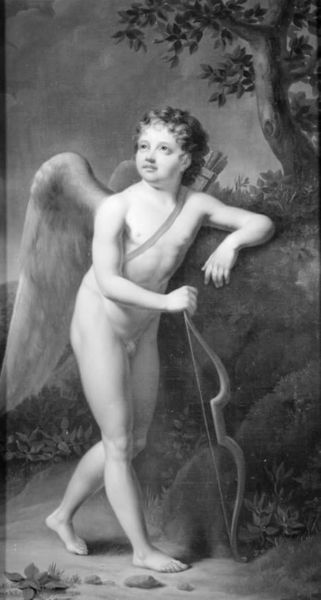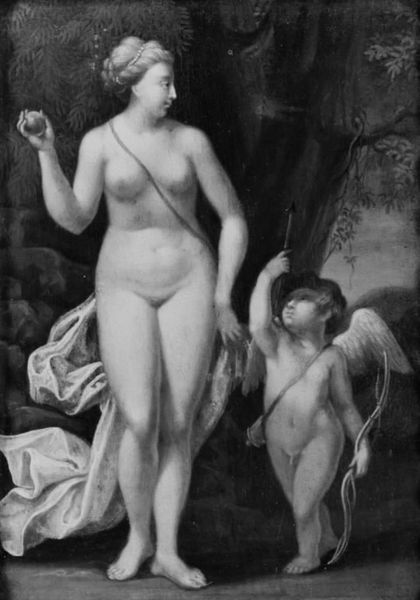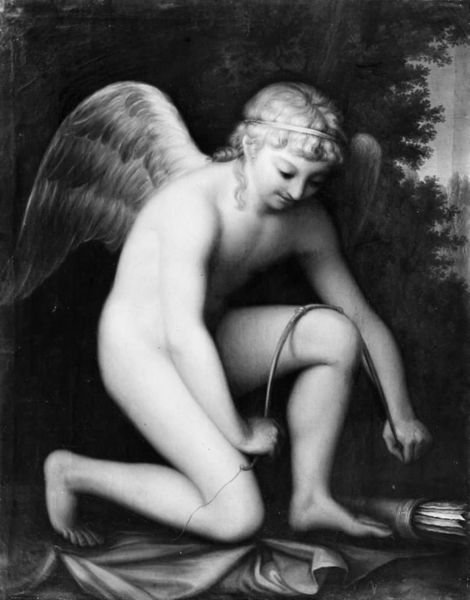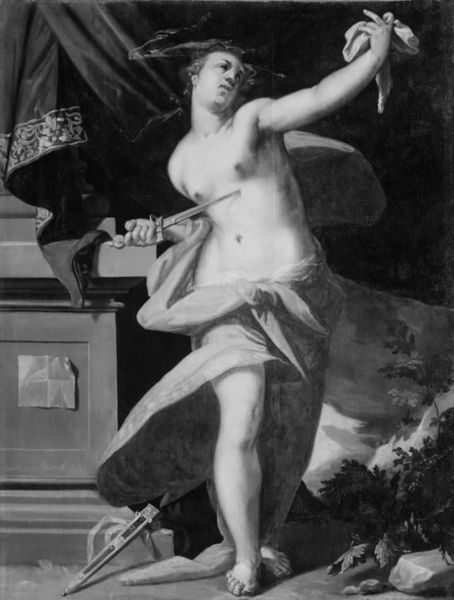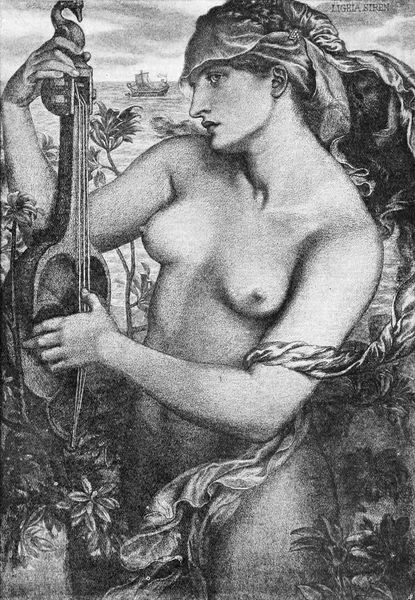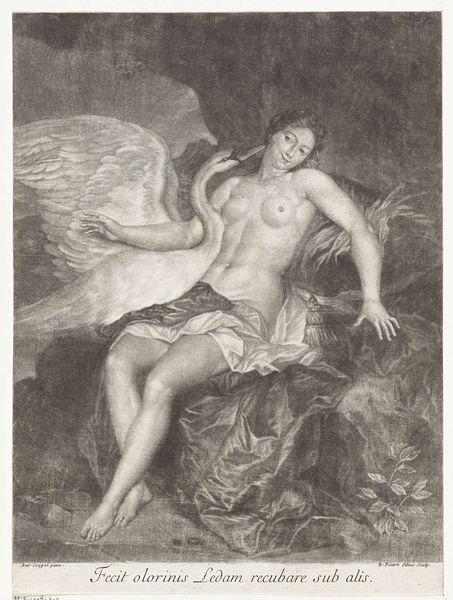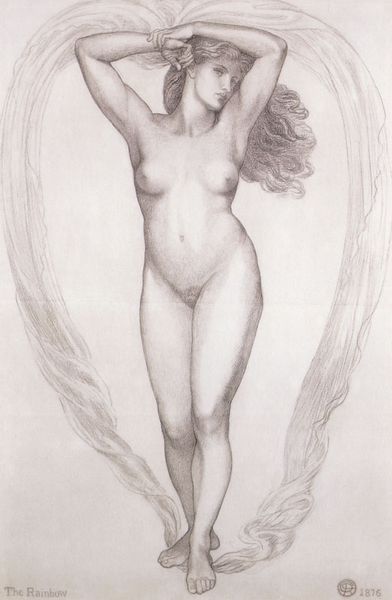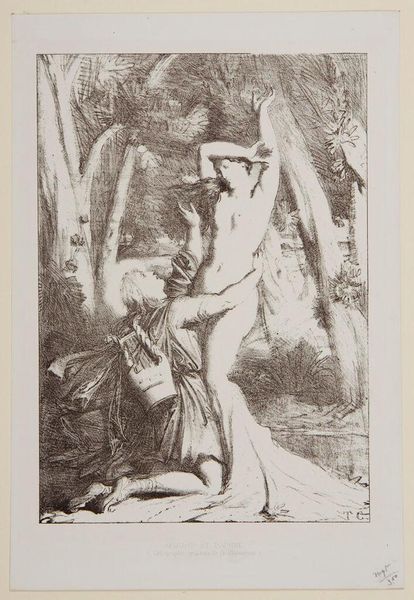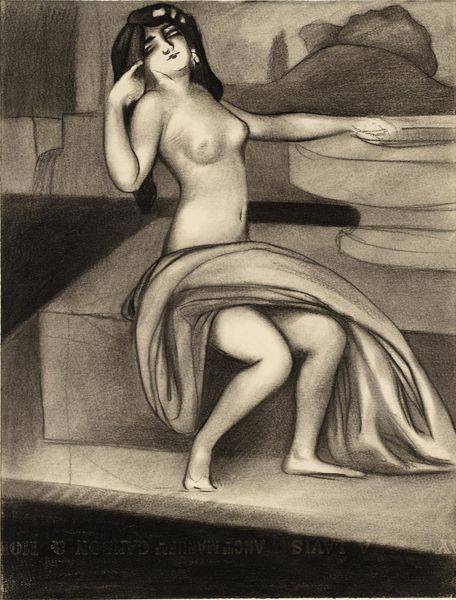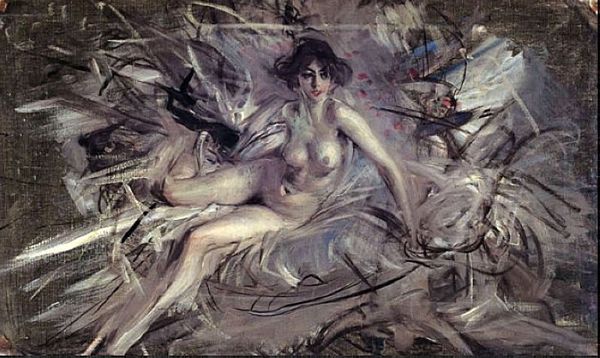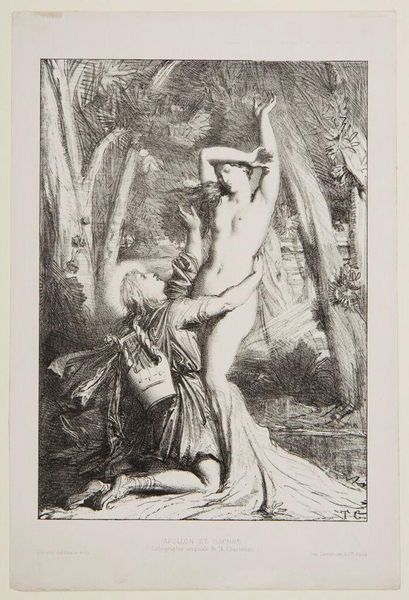
painting, wood
#
portrait
#
baroque
#
portrait
#
painting
#
wood
#
nude
Dimensions: 21.5 cm (height) x 15.5 cm (width) (Netto)
Curator: Before us is an intriguing painting entitled "Psyche or Venus Standing." Rendered anonymously, this oil on wood work resides here at the SMK, dating somewhere between 1674 and 1822, its attribution remaining uncertain. Editor: Immediately, there’s something haunting about this piece, especially considering the artist’s anonymity and ambiguous date. The figure seems trapped, or at least hesitant. Is it because it's on wood rather than canvas? Or is it the unsettling gaze of Venus that causes it? Curator: It's fascinating that you focus on the affect first. If we consider the semiotic dimension, we see the traditional elements of idealized beauty and the use of symbolic props--the draped fabric and the crumbling stone. Together, these are not just formal tools for defining beauty, but rhetorical tropes. It's quite beautiful despite being presented with somewhat poor execution of Baroque. Editor: Perhaps its “poor execution,” as you call it, offers an entry point into the subversive aspects of presenting women from this era. There is something vulnerable about the imperfection of her body, given that this type of figure was usually hypersexualized and almost unattainable. Its Baroque roots provide the foundation but it deviates. Curator: You make a fascinating point! From a structural perspective, the lines create an echo of movement that adds layers of reading to the artwork's overall form and substance. This creates an uncanny contrast against Venus' expression. The wood provides a fascinating resistance to the painterly style, but still renders the work aesthetically intriguing. Editor: Exactly. Her wings—the source of liberation—seem muted. She's almost apologetic in her vulnerability, as if the painter understands how the patriarchal gaze could and would exploit such presentation. Instead, here, in this state of “becoming” with blurred wings, this representation allows a deeper conversation about power, presentation, and societal expectations to surface. It reminds us how gendered representation carries both agency and potential danger. Curator: These elements of potential exploitation and “blurred wings,” as you mentioned, present a multi-layered reading that transcends historical periods. Even when applying close readings, they create something distinct—not solely representative of the Baroque period but almost ahead of its time, philosophically speaking. Editor: Ultimately, what lingers is how the image challenges easy categorizations—how this “Psyche or Venus Standing” speaks to historical power dynamics. It leaves us questioning the very act of viewing. Curator: Absolutely, and from a formal approach, this act of questioning elevates the work beyond just brushstrokes and colour compositions, into a broader and far more reflective sphere.
Comments
No comments
Be the first to comment and join the conversation on the ultimate creative platform.
